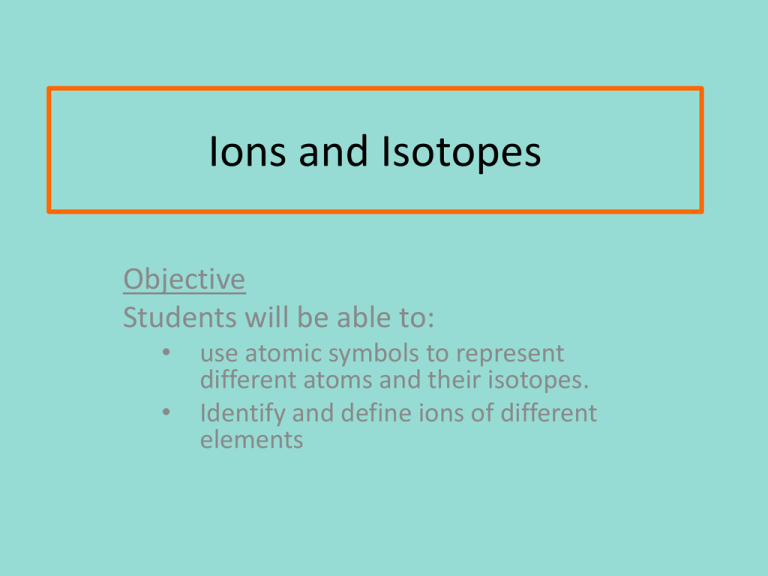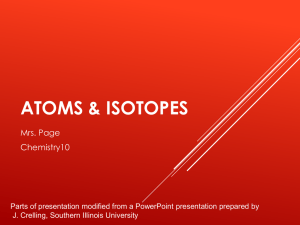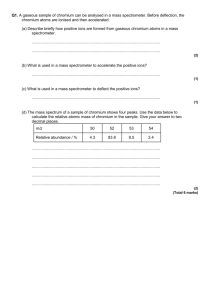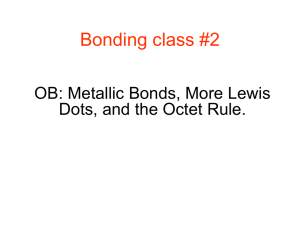Ions and Isotopes ISCI teacher
advertisement

Ions and Isotopes Objective Students will be able to: • • use atomic symbols to represent different atoms and their isotopes. Identify and define ions of different elements Some definitions • Ion - an atom that has a positive or negative charge How does something have a positive or negative charge? Number of protons and electrons has to be different! How can an atom become an ion? • By gaining or losing electrons Losing Electrons= CATION Gaining Electrons= ANION Cation • Positive charge • Formed by the atom losing electrons A neutral atom of sodium loses an electron and becomes Na+1 How many electrons does Li+1 have? Mg+2? Anion • Negative charge • Formed by the atom gaining electrons Chlorine gains one electron and becomes Cl-1 How many electrons does Br-2 have? F-1?? Why do atoms become ions? • Atoms want to have a full outer shell (orbital) – one electron in outer shell will lose the electron. – all but one electron will gain one. Which is likely to become a cation? Which is likely to become an anion? Summary of Ions Lose electrons- become positive, which is a cation Gain electrons- become negative, which is an anion Electrons are gained or lost in the outermost shell • These are called valence electrons Atomic Notation m a Mass number= protons + neutron Atomic number= Protons 40 20 Ca P= 20 N= 20 E= 20 x 14 7 Element Symbol N P= 7 N= 7 E= 7 Atom Builder game Isotopes • Isotopes are atoms of the same element that have different numbers of neutrons. • The mass number of an isotope tells you the number of protons plus the number of neutrons. Difference? Similarities? H-1 H-2 H-3 http://web.visionlearning.com/custom/chemistry /animations/CHE1.3-an-isotopes.shtml Learning Check Naturally occurring carbon consists of three isotopes, 12C, 13C, and 14C. State the number of protons, neutrons, and electrons in each of these carbon atoms. 12C 13C 6 6 14C 6 #p _______ _______ _______ #n _______ _______ _______ #e _______ _______ _______ Solution 12C 6 13C 6 14C 6 #p 6 6 6 #n 6 7 8 #e 6 6 6 Heavy Water Application of isotope • Duterium- 21H can bind with oxygen • Only occurs 1 in every 3200 molecules • Concentrated heavy water is used for development of nuclear weapons • Can be poisonous to plants and animals. Cobalt-60 Application of isotope • Has one extra neutron in the nucleus – Radioactive and emits gamma radiation, which can pass through materials easily – Sterilizes medical equipment and kills harmful bacteria











